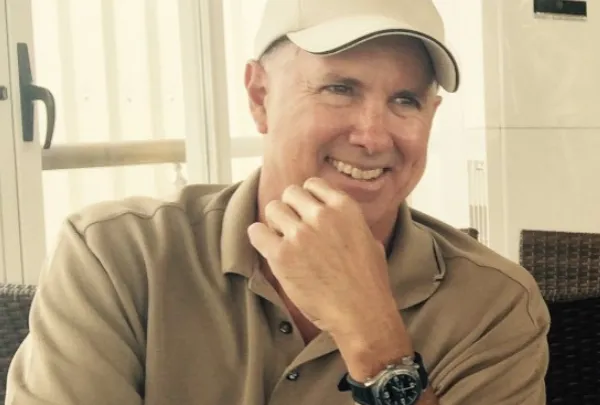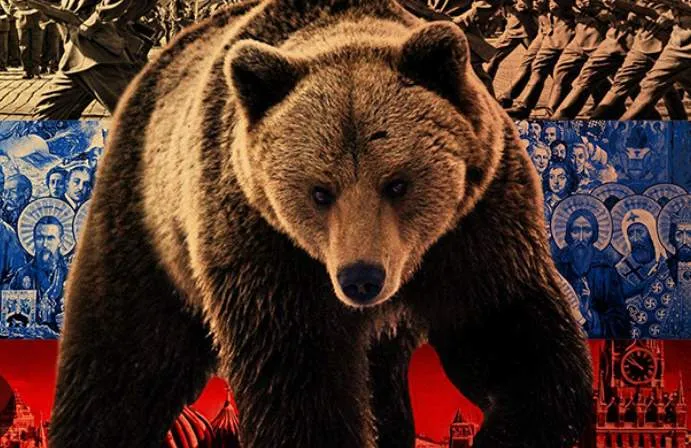From Red to Blue: H.K. Roy Unveils How the CIA Recruited KGB Spies
Listen to H.K. Roy’s True Spies Podcast: Balkan Betrayals, Part One & Two
Having come of age in the CIA culture where recruiting a KGB spy was almost impossible, H.K. Roy thought he’d hit the jackpot at the tail end of the Cold War. It was 1989 and a contact introduced Roy to a Russian officer in Southern Europe who wanted to share his secrets. But was the KGB spy a dangle? A threat? Or the opportunity of a lifetime?

H.K. was circumspect during their first meeting. "Like me, the man got right to the point; in a hushed voice, he said he wished to work in place for American intelligence against the KGB in exchange for hard currency; alternately, he would submit to a full one-time debriefing and share all of his KGB secrets with me," he recalled in American Spy.
The CIA operative thought it might be Christmas. H.K. photocopied the man's documents, jotted down an address and details, and checked whether CIA HQ had any operational interest. He was stunned when the answer came back: ‘No’. With the Berlin Wall teetering and Russia perilously close to collapse, the CIA's Soviet-East European Division chief sent a cable telling CIA operations officers that the threat from Russia had "all but disappeared" so they should stand down on Soviet targets.

Short-sighted? Naive? Undoubtedly, but hindsight is often 20-20. H.K. gave his Soviet contact the bad news, offered to buy the man’s paratrooper’s watch for $25, and picked up a one-time debriefing for free as a bonus. H.K. reported all to CIA HQ but there was no response.
For now, the CIA considered the Soviet Bear tamed. It made H.K. long for the glory days of old when he’d once used his wife as ‘bait’ to attract another KGB recruit into the ‘kill zone’. During that operation, the air crackled with danger and excitement.

SADRAT: How to recruit a Russian spy
When CIA officers want to recruit a spy, they follow the handy acronym SADRAT - Spot, Assess, Develop, Recruit, Agent Handling, and Terminate. It would come in handy when H.K. Roy and his first wife, Stacy, were living in Latin America.
Ahead of one diplomatic reception, H.K. briefed Stacy on a classic honey trap plan. They need to keep an eye out for ‘Boris Gudenov', a Soviet first secretary and golden-boy on the fast-track to the top. Boris was known for his wandering eye and would likely arrive without his wife. Stacy’s job was to stand tall in the designated ‘kill zone’ while H.K. waited in the shadows for Boris to pounce. Game on. Within minutes Boris and Stacy were chatting, giving H.K. an excuse to join his wife and their new friend.
H.K. may have been the first American spy to approach Boris one-on-one but the CIA had talent-spotted Boris years earlier and kept tabs on his career. The Agency knew all about Boris’ extra-marital affair and risk-taking nature. Once Boris was vetted, it was time for H.K. to complete Step 2: Arrange a ‘chance’ encounter so he could assess Boris. Check. Discreet contact had been made.
Step 3 (Develop) was now in the play. It was time for H.K. to have a sustained and meaningful conversation with Boris, but how? H.K would need to arrange a ‘bump’ - an 'accidental' meeting at a public place that would allow H.K. to secure a much-coveted second meeting with Boris to continue the conversation and build a relationship. H.K. was tipped off that Boris had a doctor's appointment in a clinic across the street from the CIA station. It was time for another accidental meeting.
The coincidence led naturally to lunch and an invitation to an open-day reception at the Soviet Embassy attended by hundreds of other foreign expats. Boris even brought H.K. back to the 'secret room' where the embassy bartender poured rounds of vodka in defiance of Mikhail Gorbachev’s anti-alcohol campaign. "Much of our time was spent swapping jokes and lies,” Roy recalled, “along with accusing each other's service of clearly being the more heinous."

Bottoms up!
The CIA-KGB relationship evolved to the point where H.K. Roy would meet Boris for drinks then occasionally duck out to the bathroom stall to jot down notes. CIA HQ would respond to Roy's regular updates with a big-picture analysis and suggestions about how to move the relationship forward.
“It was the most fun Spy vs. Spy experience of my career. But after nearly three years of progress, the correct decision was made to stand down on making any kind of recruitment approach,” H.K. said. Why? Boris never evinced any real vulnerabilities to indicate he would be amenable to a recruitment pitch. In the CIA’s assessment, Boris would always be a loyal Soviet officer.
The groundwork was laid though. Should Boris ever reach the point where he ‘mentally defected’, Boris knew who to call. As luck would have it, another opportunity soon presented itself and H.K. Roy was back in the spying game.
"The brand new social experience where you activate your gaming skills as you train like a spy."
- TimeOut
Take on thrilling, high-energy espionage challenges across different game zones.


The CIA tees up a Russian spy
Over lunch back in southeastern Europe, H.K. heard about another potential recruit - a man named ‘Sasha’ who would soon become his golfing buddy - even if Sasha didn’t know it yet and H.K. didn't play golf.
HQ validated Sasha as a high-priority recruit… You can probably guess what happened next. H.K. engineered a ‘chance’ encounter. Luckily the men had a mutual acquaintance: "The fact that our mutual friend vouched for me would bestow upon me almost instant bona fides in the Russian's eyes. This was the key to our initial contact."
A golf holiday was later arranged, a get-together in the Bahamas at an upscale resort that would allow the target to escape from the Russian winter and prying eyes. There would be plenty of social events plus relaxing days on the course. H.K. had one month to get his golf handicap down. His goal was simply to play 18 holes without humiliating himself, which seemed attainable.
Sasha spoke English so H.K. threw in a few Serbian words he claimed to have learned through his maternal "grandfather" to give them a bond. Before long, the two men agreed to have lunch. H.K. made his pitch then and there, asking Sasha to provide Russian secrets. Sasha was happy to work for H.K. on a private basis in exchange for hard currency.
They met a month later in a third country, then several more times during business trips - always arranged outside of Russia. Langley HQ provided H.K. with a long list of questions for Sasha, a spy they deemed ‘extremely reliable’. In this instance, the operation offered significant ‘bang for the buck’. America's national security was boosted thanks to one well-placed spy. H.K. Roy was at the top of his game.
***
To hear more tales about H.K. Roy’s life as a CIA case officer, listen to our True Spies Podcast: Balkan Betrayals, Part One & Two.
SPYSCAPE+

Join now to get True Spies episodes early and ad-free every week, plus subscriber-only Debriefs and Q&As to bring you closer to your favorite spies and stories from the show. You’ll also get our exclusive series The Razumov Files and The Great James Bond Car Robbery!


Gadgets & Gifts
Explore a world of secrets together. Navigate through interactive exhibits and missions to discover your spy roles.
Your Spy Skills
We all have valuable spy skills - your mission is to discover yours. See if you have what it takes to be a secret agent, with our authentic spy skills evaluation* developed by a former Head of Training at British Intelligence. It's FREE so share & compare with friends now!
* Find more information about the scientific methods behind the evaluation here.


Stay Connected
Follow us for the latest
TIKTOK
INSTAGRAM
X
FACEBOOK
YOUTUBE